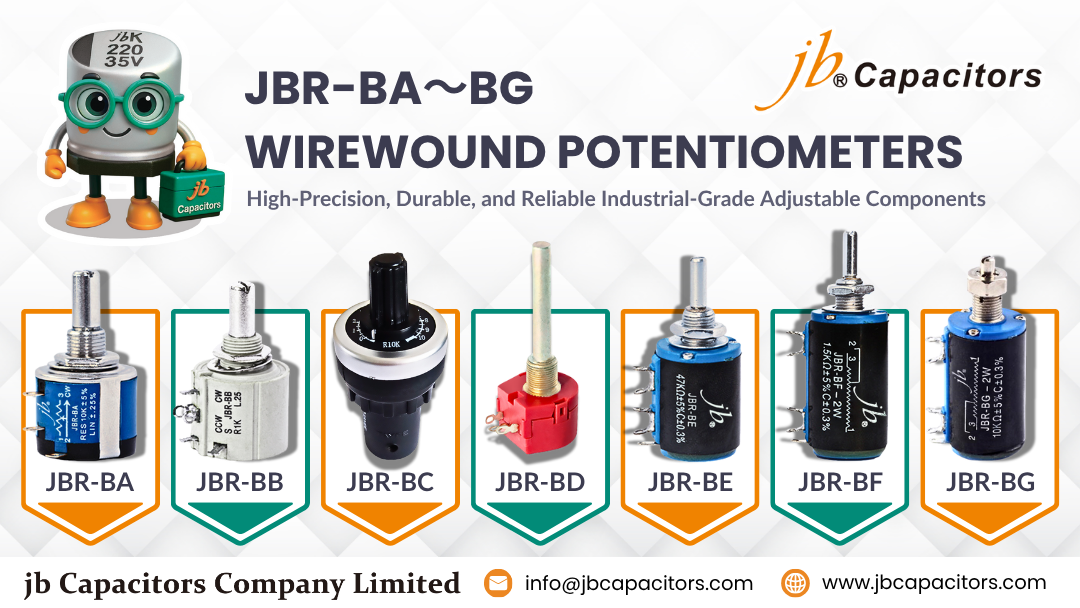Ever turned a potentiometer and wondered why some keep spinning while others stop after one twist?
That’s exactly the difference between single-turn and multi-turn wirewound types.
The jb® JBR-BA ~ JBR-BG Series provides precise, stable adjustment across all applications—from quick manual tuning to fine industrial calibration.
Why Choose Wirewound Potentiometers?
Wirewound potentiometers use a coiled resistance wire instead of a carbon film. This construction ensures high accuracy, excellent heat stability, and minimal drift—ideal for measurement systems, audio tuning, and control panels that demand reliability.
Meet the JBR Series Family
The JBR-BA ~ JBR-BG family includes models from compact single-turn to precision 10-turn types. Below is a quick comparison for easier model selection:
| Series | Turns | Power | Resistance Range | Recommended Application |
|---|---|---|---|---|
| JBR-BC | 1 Turn (Trimming) | 1 W | 50 Ω – 2 MΩ | PCB trimming, fine tuning |
| JBR-BD | 1 Turn | 1 W | 50 Ω – 10 kΩ | Quick panel adjustment |
| JBR-BE | 5 Turns | 1 W | 100 Ω – 47 kΩ | Compact control modules |
| JBR-BA / BB / BF / BG | 10 Turns | 2 W | 100 Ω – 100 kΩ | Industrial calibration & automation |

Video Demonstration
Frequently Asked Questions
Wirewound types are more stable, accurate, and durable under temperature and mechanical stress, ensuring consistent performance over years.
Yes, as long as your circuit accommodates more turns. The JBR-BG offers finer control for sensitive calibration points.
Yes. The JBR family offers multiple mounting and shaft options suitable for both front and rear panel installations.
You can contact us here — our team will respond within 24 hours.
No comments:
Post a Comment